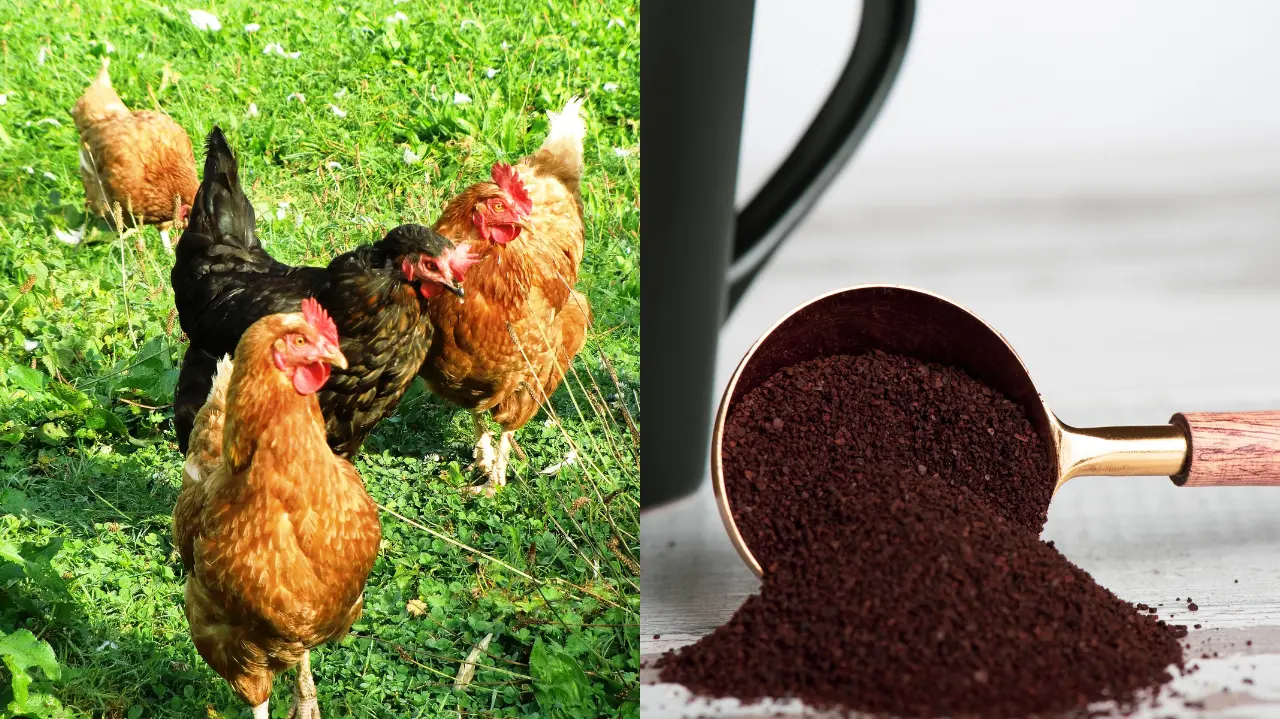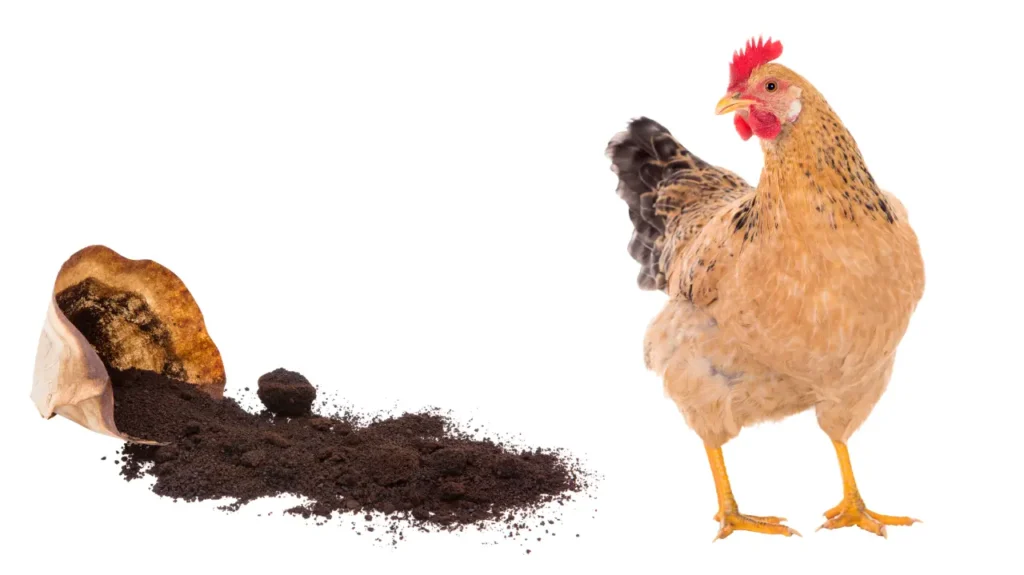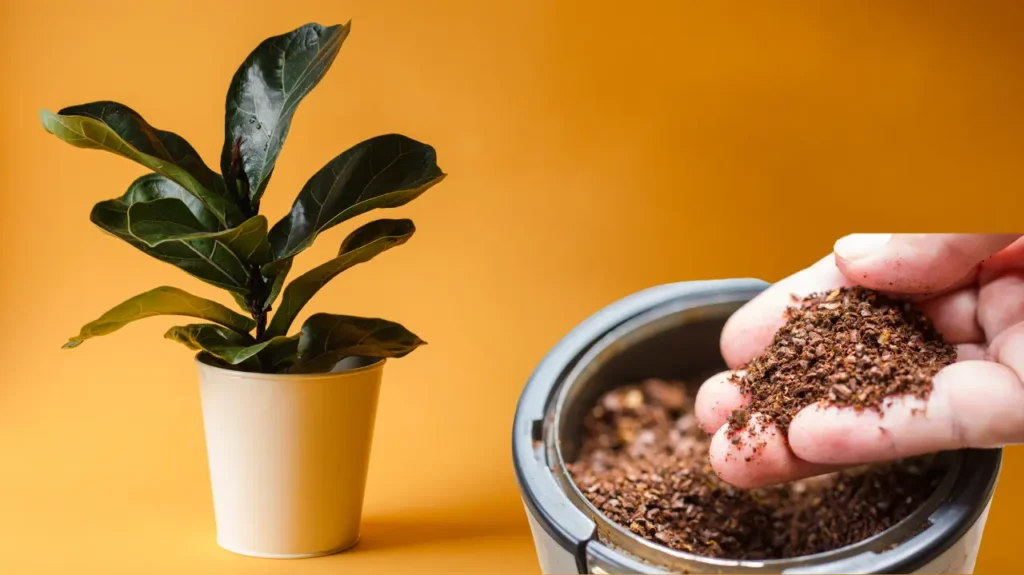If you’ve ever tossed used coffee grounds into the compost bin, you’ve probably wondered: are coffee grounds good for chickens?
The debate is heated. Some backyard keepers swear coffee grounds boost nutrition, while others warn of hidden dangers.
As of May 2025, the answer isn’t as simple as a yes or no.
This guide cuts through the noise. We’ve sifted through decades of research, from a shocking 1944 poultry study to modern vet advice, and talked to farmers who’ve tested coffee grounds firsthand.
You’ll get clear, science-backed answers on risks like caffeine poisoning, myths about “energy boosts,” and safe ways to reuse grounds around your flock.
Are Coffee Grounds Good for Chickens?
Millions of coffee drinkers in the U.S. brew their favorite cup every morning, then stare at the leftover grounds, wondering: Could these help my chickens?
It’s a hot topic. Online forums buzz with claims that coffee scraps add nutrients to feed or repel coop pests. But other keepers share horror stories of jittery hens or worse.
So, are coffee grounds reasonable for chickens? Science says to proceed with extreme caution.
While the grounds contain minerals like potassium and magnesium, they’re also loaded with caffeine, a toxin for birds.
Chickens lack the enzymes to process stimulants, meaning even tiny amounts can spike heart rates, disrupt digestion, or stunt growth.
A 1944 study proved this: chicks fed coffee grounds grew weaker and smaller than those on standard feed.
The risks don’t stop at caffeine. Coffee’s acidic pH can irritate a chicken’s crop, leading to sour crop or bacterial imbalances.
And let’s bust one myth: decaf isn’t safer. Processing rarely removes all caffeine, and traces of it still threaten small birds. Bottom line? What’s harmless to humans can be deadly to flocks.
Understanding Coffee Grounds
You dump those dark, fragrant coffee grounds into the filter, brew your cup, and toss the leftovers. But what’s really in that gritty waste?
Used coffee grounds are what’s left after hot water extracts flavor from beans, particles packed with organic matter. They’re not just brown dust.
These grounds hold nutrients plants love: nitrogen for leafy growth, potassium for strong roots, and even traces of magnesium and zinc.
Gardeners treasure them as free fertilizer. But here’s the twist: they’re also caffeinated.
A 2023 study in Foods (MDPI) found instant coffee packs up to 44 mg of caffeine per gram; grounds aren’t far behind. That’s like hiding espresso shots in your compost.
For chickens, this matters. Their bodies aren’t built for stimulants. While a compost pile breaks down caffeine slowly, fresh grounds act like a poison pill.
Tannins and alkaloids add to the risk of irritating delicate digestive systems. So, while your roses might thrive, your flock? Not so much.
Scientific Evidence on Feeding Coffee Grounds to Chickens
In 1944, scientists ran a groundbreaking experiment that still rattles poultry experts today.
They swapped out oat hulls in chicken feed for coffee grounds, thinking it might work as a wartime ration hack—bad idea.
Chicks on the coffee diet grew slower and weaker, like feeding toddlers espresso instead of milk. The study, published in Poultry Science, proved coffee grounds aren’t just useless for growth; they’re actively harmful.
Fast-forward to modern studies, and the news gets grimmer. When researchers tested coffee pulp (a byproduct similar to grounds) in broiler diets, the results were chilling.
At a 50% inclusion rate, chicks faced 100% mortality within six weeks. Even tiny amounts of caffeine, just 0.05% of the diet, spiked embryonic death rates in hens to 38.2%.
Imagine losing over a third of your flock before eggs even hatch.
But caffeine isn’t just a silent killer. Veterinary experts like PetMD warn it attacks chickens on multiple fronts.
Within 30 minutes of ingestion, birds can pant like they’ve run a marathon, tremble uncontrollably, or collapse from seizures.
The ASPCA backs this up, comparing caffeine’s effect on chickens to chocolate poisoning in dogs, rapid heart rates, vomiting, and, in severe cases, death.
Here’s the kicker: decaf isn’t safe either. Processing rarely strips all caffeine from the grounds; even trace amounts stress birds’ tiny bodies.
One study on laying hens found that caffeine-laced feed thinned eggshells, risking breakages and hatch failures.
Farmers sometimes gamble, thinking “a little won’t hurt.” But science says otherwise. Chickens lack the enzymes to metabolize caffeine, which builds up in their systems.
Over time, even small doses disrupt digestion, stunt growth, and weaken immune responses. It’s like pouring acid into a car’s gas tank, which is slowly corrosive and eventually catastrophic.
Nutritional Profile and Suitability
At first glance, coffee grounds seem like a nutrient jackpot packed with nitrogen, calcium, and magnesium. But here’s the catch: chickens can’t use these nutrients like plants do.
The minerals in coffee grounds are locked in forms that chicken guts struggle to break down. Imagine handing a toddler a steak knife; it’s there but useless and dangerous.
While The Poultry Feed blog argues grounds offer “extra energy” from caffeine, that’s like calling candy a health food because it has calories.
Caffeine provides a short-term buzz, but chickens aren’t built for stimulants. Even small doses trigger anxiety, restlessness, and long-term organ strain. Worse, coffee’s high acidity throws off the pH balance in their digestive tract.
As The Organic Goat Lady notes, this can lead to a sour crop, a painful condition where food ferments in the crop instead of digesting.
Commercial feeds are precision-engineered. They balance proteins, vitamins, and minerals to keep hens laying and chicks growing. Coffee grounds?
They’re the nutritional equivalent of throwing darts blindfolded. Too much nitrogen strains kidneys, while missing key vitamins leads to brittle feathers or weak bones.
Even the zinc and potassium in the grounds can’t compensate for the chaos they cause.
Practical Uses Around the Chicken Coop
So you’re hooked on repurposing coffee grounds but terrified of harming your chickens. Good news: with creativity, those java scraps can still serve your coop without becoming chicken snacks.
Let’s explore the hacks that keep both eco-warriors and hens happy.
First up: bedding debates. Some swear to mix coffee grounds with straw, which cuts coop odors and absorbs moisture better than shavings.
But here’s the twist: curious chickens might peck at the gritty texture, risking caffeine exposure. While recycled coffee bedding brands claim safety, seasoned keepers warn it’s like playing Russian roulette.
Safer bet? Blend a handful of grounds into traditional pine shavings, just enough to mask smells without tempting pecks.
Composting is where coffee truly shines. Toss grounds into a sealed bin (away from the coop) to create a nitrogen-rich compost pile.
Worms flock to this caffeinated buffet, and that’s your golden ticket. Let chickens scratch through finished compost for plump worms, a protein-packed treat, without direct access to grounds.
It’s a win-win: worms boost their diet, and grounds stay out of crops.
Pest control? Coffee’s gritty texture and sharp scent repel ants, slugs, and even rodents. Sprinkle used grounds (never fresh; they’re too acidic) around the coop’s perimeter, far from scratching zones.
Ants hate the barrier; slugs recoil at the abrasiveness. But tread lightly: too much coffee near nesting areas can pique her curiosity. A light dusting does the trick.
Pro tip: Skip using grounds in dust baths. While some claim it deters mites, the acidity can dry skin and feathers. Stick to diatomaceous earth or wood ash, which are safer, proven alternatives.
Safety Guidelines for Using Coffee Grounds
Coffee grounds aren’t inherently evil, but they demand respect. Think of them like a flickering campfire: proper when controlled, disastrous if ignored.
Here’s how to walk that tightrope.
Dilute, dilute, dilute. If you’re set on using grounds in bedding, treat them like chili powder in a recipe; too much ruins the dish.
Mix a scant cup of cooled, used grounds into every 10 pounds of pine shavings or straw. This cuts odors without screaming “snack time” to curious hens.
Check daily for pecking; if birds show interest, scrap the experiment fast.
Compost like a ninja. Build your compost pile outside the run, sealed with a lid or wire mesh.
Chickens can’t resist worm buffets, but let them hunt in finished compost only after the grounds have broken down.
This keeps caffeine out of their beaks while letting them score protein-rich worms. Rotate piles monthly to avoid accidental exposure.
Pest patrol, stealth mode. Coffee grounds repel pests best when chickens can’t reach them. Sprinkle a thin ring around the coop’s foundation, then cover it with sand or dirt.
Ants hit a “no entry” zone, slugs retreat, and your flock stays oblivious. Reapply after heavy rains, but never pile grounds near feeders or nesting boxes.
Eyes peeled, always. Chickens are masters of mischief. After introducing coffee grounds anywhere near their space, watch for odd behaviors: frantic scratching, excessive head-shaking, or sudden lethargy.
These signal curiosity turning to risk. If one hen starts pecking at treated areas, remove grounds immediately; it takes just one bold bird to start a trend.
When in doubt, toss them out. Composting coffee grounds with chicken manure? Big no.
The mix creates overly acidic compost that harms plants and soil. Keep coffee scraps in a separate bin, far from coop waste.
Alternatives to Coffee Grounds
So coffee grounds are off the menu; what’s next? Your flock’s snack and bedding options are vast, delicious, and safe.
Let’s talk real food first. Chickens adore veggie scraps: think crisp lettuce leaves, carrot tops, or apple cores (minus the seeds).
These aren’t just treats; they’re vitamin goldmines. Leftover cooked oats or quinoa? Sprinkle them in the run; it’s like throwing a grain buffet that packs protein without the caffeine jitters.
For protein boosts, skip risky additives and go natural. Mealworms and crickets are the ultimate chicken crackers.
Toss a handful into the coop and watch the feathery frenzy. These bugs build muscle and keep eggshells strong; no caffeine crash is required.
Now, bedding. Pine shavings are the classic choice, soaking moisture and masking odors like a pro. Straw? Cheap, cozy, and perfect for winter nesting.
If you’re eco-minded, hemp bedding absorbs messes twice as fast as wood shavings and stays dust-free. Do you prefer low maintenance?
Sand floors are a game-changer; rake clean in seconds and say goodbye to bacteria buildup.
Still unsure? The Organic Goat Lady swears by vet chats. A quick call to a poultry expert tailors choices to your flock’s quirks.
Your hens need extra calcium, or your coop needs better winter insulation. Custom advice beats guesswork every time.
Myths and Misconceptions
First up: the claim that coffee grounds give chickens a “healthy energy boost.” Sounds harmless. Wrong. Chickens aren’t marathon runners needing a caffeine kick; they’re foragers with delicate systems.
The Poultry Feed bluntly compares this myth to feeding kids energy drinks. Caffeine doesn’t energize birds; it spikes heart rates, triggers panic, and can lead to fatal seizures.
No farmer wants jittery hens hiding in corners instead of pecking happily.
Next is the decaf delusion. “But I use decaffeinated grounds!” some insist. Here’s the hitch: decaf doesn’t mean zero caffeine. Processing removes most, not all.
Corner Coffee Store notes even trace amounts, harmless to humans, can overwhelm a chicken’s tiny body. Think of it like serving “low-alcohol” beer to a toddler. Why risk it when safer treats abound?
Then there’s the dewormer debacle. Blogs and forums sometimes tout coffee grounds as a “natural” parasite remedy. Chicken & Chicks Info calls this dangerous nonsense.
No peer-reviewed study supports it. Worse, ingesting grounds could irritate a chicken’s gut, making worms thrive in a stressed digestive system. Deworming requires vet-approved meds, not kitchen scraps.
One bonus myth? “Composting neutralizes caffeine.” Nope. While microbes break down some toxins, caffeine lingers for months.
Letting chickens scratch through compost with fresh grounds is like letting kids play in a sandbox sprinkled with broken glass.
Frequently Asked Questions
Can I feed decaf coffee grounds to chickens?
Nope. Decaf doesn’t mean caffeine-free. Most decaf grounds still pack 2-3 mg of caffeine per gram, enough to stress a chicken’s nervous system. Add in tannins and acids, and you’re gambling with their health for zero reward. When The Organic Goat Lady says, “skip all coffee scraps,” she means all.
What if my chickens are free-range? Can I toss grounds in their run?
Free-ranging cuts risk, but hunger changes everything. A bored or hungry hen will peck at anything, coffee grounds included. Backyard Chicken forums share horror stories of flocks gobbling grounds during feed shortages. Play it safe: keep coffee waste far from scratching zones, especially when greens are scarce in winter.
Do coffee grounds deworm chickens?
Not even a little. This myth is like using duct tape to fix a leaky roof; it might look helpful, but problems fester. No credible study links coffee to parasite control. Irritated guts from the grounds could make worms thrive. Deworming needs meds prescribed by a vet, not your morning brew’s leftovers.
How do I ditch coffee grounds safely?
Your garden’s begging for them. Mix grounds into compost (away from the coop), spread them as mulch around acid-loving plants like blueberries, or donate to community gardens. Grow Veg notes that coffee grounds repel slugs from lettuce and roses; keep them off chicken menus.
Aren’t there any benefits to feeding coffee grounds?
Zip. Zilch. Nada. Even if grounds offered nutrients (they don’t have usable forms), caffeine’s risks dwarf hypothetical perks. The Organic Goat Lady bluntly says, “Chickens need feed, not folklore.” Stick to balanced diets, and save coffee scraps for compost, where they belong.
Conclusion
So, are coffee grounds good for chickens? The short, firm answer is no. Science leaves no wiggle room: caffeine’s toxicity trumps any imagined perks.
From stunted chicks in 1944 to modern hens battling heart stress, research screams danger. But let’s not demonize coffee scraps entirely.
Used around the coop, not in it, grounds find redemption. Toss them in sealed compost to breed plump worms, scatter them as pest barriers, or mix them sparingly in bedding.
Just never on the menu. Your flock’s safety hinges on simple swaps: leafy greens for snacks, pine shavings for nests, and trusty feed for balanced meals.
In the end, coffee belongs in your cup, not their crop.
Ditch the myths, embrace the facts, and your chickens will repay you with vigor, laying, scratching, and clucking their way to a thriving flock.




